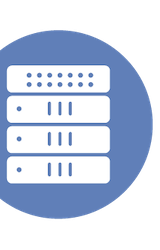In this article by Keith Townsend, the exploration of the Data Prep Dilemma reveals significant insights into whether the IT industry is over-complicating data preparation or on the verge of resolving prevailing challenges. Townsend underscores the balancing act organizations face between employing advanced techniques and practical execution to manage their data effectively. Find more coverage of Qlik Connect on LinkedIn.
Unlocking the Power of Agentic AI at Qlik Connect 2025
Gina Rosenthal expertly explores the potential of Agentic AI during her insightful coverage of Qlik Connect 2025, highlighting its transformative impact on business intelligence and data analysis. She explains how these advanced AI capabilities improve decision-making and operational efficiency in contemporary enterprises. For additional insights from Gina Rosenthal, visit her contributions on LinkedIn Pulse.
Qlik Connect 2025: Answers For Agentic AI
Jim Czuprynski recently discussed the implications of agentic AI following the Qlik Connect 2025 event, highlighting how these technologies are set to transform enterprise decision-making processes. He outlines the potential integration challenges and benefits for business intelligence systems, placing a special emphasis on predictive analytics and machine learning enhancements. For additional insights and discussions by Jim Czuprynski, explore his coverage on LinkedIn Pulse.
We are getting closer and closer to self-driving networks, and I love it!
Francois Verges expresses great enthusiasm for the progression towards autonomous, self-driving networks, heralding a new era in network technology. His positive outlook underscores the potential for increased efficiency and reduced human intervention in managing complex network infrastructures. For a more detailed analysis of the developments discussed at Mobility Field Day 13, check out the comprehensive coverage by Francois on this topic.
Automating the network design, what does it really mean?
Francois Verges examines the implications of automating network design, focusing on how it reshapes the roles of network professionals and the deployment practices within the industry. He explores the tools and strategies that are essential for adopting automation in network design, highlighting the potential benefits and challenges. This post was inspired by the Nile presentation at Mobility Field Day 13.
New Juniper’s generalized AI model – A glimpse of what the future will look like
Francois Verges offers a concise overview of Juniper’s new generalized AI model, showcasing its potential to transform networking technologies. His insights demonstrate how this innovative AI model could pave the way for more intuitive and powerful network management solutions. For a detailed exploration of Mobility Field Day 13, see additional coverage by Francois Verges on LinkedIn.
Phison: Where Have You Guys Been Hiding?
Jim Czuprynski provides an insightful overview of Phison’s notable yet under-the-radar advancements in the world of data storage technology. He emphasizes Phison’s role in driving performance enhancements and storage innovations, which have largely gone unnoticed in wider industry discussions. For additional insights into AI Infrastructure Field Day 2, read more from Jim Czuprynski on LinkedIn Pulse.
Bringing Intent-Based Management to Open Networking for AI
Jack Poller explores the integration of intent-based management within open networking frameworks in the context of AI advancements. This approach emphasizes smart network management strategies that adapt to AI-specific requirements, thereby enhancing operational efficiency and reducing complexity in AI network infrastructures. For additional insights on AI Infrastructure Field Day 2, follow Jack Poller’s coverage on LinkedIn Pulse.
Deploying a 5G neutral host infrastructure is getting easier and easier
Francois Verges recently discussed the evolving ease of deploying 5G neutral host infrastructures, highlighting technical advancements and strategic approaches that simplify these complex implementations. His insights underline the increasing accessibility of 5G technologies for enterprises seeking to enhance connectivity and network capabilities. For more coverage of Mobility Field Day 13, check out Francois Verges’ coverage on LinkedIn.
WPA3 Private Network Standard Needed: Solving Wi-Fi Network Segmentation Challenges in Multi-User Environments
Francois Verges discusses the necessity of the WPA3 private network standard in addressing the complexities of Wi-Fi network segmentation in environments with multiple users. He highlights the importance of robust security measures and efficient network management to ensure safe and reliable connectivity. More coverage of Mobility Field Day 13 by Francois Verges can be found on LinkedIn.
Juniper: Add Apstra, Ad Astra
Jim Czuprynski offers an insightful analysis on Juniper’s strategic acquisition of Apstra and its implications for advancing their network management capabilities, particularly with automation and data center operations. He explores how this integration enhances Juniper’s existing portfolio and positions the company to better navigate the evolving landscape of network technology. For additional insights from AI Infrastructure Field Day 2, follow Jim Czuprynski’s coverage on LinkedIn Pulse.
Solidigm: GenAI and RAG Gobble Storage Like Hungry Hippos
In his latest article, Jim Czuprynski discusses the significant impact of Generative AI and Retrieval-Augmented Generation models on storage requirements, likening their capacity needs to the fast-paced childrens’ game of Hungry, Hungry Hippos. He explores how Solidigm’s solutions are addressing these evolving demands in storage technology. For additional insights on AI Infrastructure Field Day 2, follow Jim Czuprynski’s coverage on LinkedIn Pulse.
Google: Five Things You (Probably) Didn’t Know About Generative AI
Jim Czuprynski illuminates five lesser-known aspects of generative AI, focusing on its growing impact and potential applications in various industries. He explores how these advancements are not only revolutionizing existing processes but also paving the way for new forms of technological innovation and interaction. For additional insights into AI Infrastructure Field Day 2, explore more of Jim Czuprynski’s coverage on LinkedIn Pulse.
Keysight: Probing 7-Layer Network Salads for GenAI Performance Issues
Jim Czuprynski provides a detailed analysis of Keysight’s innovative approaches to identifying and resolving GenAI performance challenges in multi-layer network environments. He illustrates how Keysight’s tools effectively probe through the complexities of these “network salads” to ensure optimal performance and reliability for AI-driven applications. For more insights from Jim Czuprynski on AI Infrastructure Field Day 2, check out his series on LinkedIn Pulse.
The AI Data Center Evolution: Juniper Apstra’s Lifecycle Solution for Performance at Scale
Jack Poller recently explored Juniper Apstra’s lifecycle solution for AI data centers, highlighting its capacity to manage performance at scale. He discussed the evolution of AI data centers through the lens of Juniper’s advanced tools, which are crucial for optimizing and automating data center operations as they increase in complexity and scale. For more insights on AI Infrastructure Field Day 2, you can read additional coverage by Jack Poller on LinkedIn Pulse.
Nutanix: Working on the Easy Button for AI
Camberley Bates explores Nutanix’s efforts to simplify the deployment and management of AI applications through their comprehensive solutions, often referred to as the “Easy Button” for AI. By focusing on integrating hardware and software seamlessly, Nutanix aims to streamline operational complexities and enhance efficiency for enterprise AI implementations. For additional insights from AI Infrastructure Field Day 2, follow Camberley Bates’s coverage on LinkedIn Pulse.
Aviz Building Networks for AI
Josh Warcop recently shared insights on Aviz’s approach to building dedicated networks that support AI environments, showcasing their innovative solutions aimed at enhancing AI infrastructure. His analysis covers the technical specifications and operational benefits that Aviz’s networks bring to complex AI applications, facilitating smoother and more efficient processes. Discover further discussions and content by Josh Warcop over at LinkedIn Pulse.
Phison: The $1.8B Data Company You Haven’t Heard of – Until Now
Camberley Bates explores Phison, a significant yet under-the-radar $1.8 billion company specializing in data storage and management solutions. In her comprehensive overview, Bates sheds light on how Phison is influencing the storage industry and impacting global data infrastructure with innovative technologies. For further insights into AI Infrastructure Field Day 2 and more from Bates, check her coverage on LinkedIn Pulse.
My Notes from the field – Next Generation HPE ProLiant Compute Deep Dive
Vuong Pham provides a comprehensive analysis of the latest advancements in HPE’s Next Generation ProLiant Compute solutions, focusing on technological enhancements and enterprise benefits. He offers insights into how these improvements can drive efficiency and innovation in data centers. Explore additional insights from our special Tech Field Day event with HPE and more coverage from Vuong Pham on LinkedIn Pulse.
What is a Field Day? Why Does it Matter?
In this LinkedIn Pulse article, Scott Shadley, who presented at AI Infrastructure Field Day last month, explores what Tech Field Day means to him. It’s wonderful to get the perspective of people like Scott who have been connected to Field Day for years but have not been part of the organization or delegate panel. Tech Field Day is for everyone!







